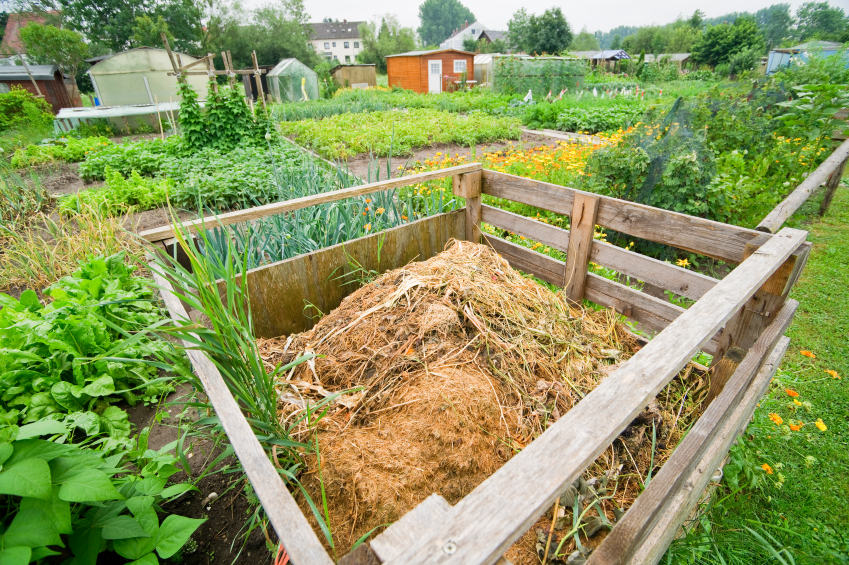
Gardens and lawns need a variety of nutrients, but it’s not just a question of adding fertilizer. To maintain healthy plants, you also need to make sure there’s enough organic matter in the soil. This organic matter breaks down into a substance called humus which helps to maintain soil moisture and feed the tiny organisms that plants need to grow.
Adding compost to your soil is just what the doctor ordered for your landscape.
Below we’ll look at what compost is, why it’s important, and how you can use it to increase organic matter in the soil for the happiest plants on the block.
What is compost?
Compost is made up of decomposed materials such as leaves, grass clippings, and kitchen scraps. Insects and tiny microorganisms help to break it down, and the resulting mixture is chock full of the nutrients plants need to survive.
When added to the garden or lawn, compost restores life to the soil. It also helps loosen heavy clay soil, allowing plant roots to flourish, and helps sandy soil hold moisture. Work compost into your soil in the spring before seeding/planting, and use it as mulch in flower and vegetable gardens as well as around trees and shrubs.
How to make your own compost.
At its most basic, compost is nothing but a pile of leaves and other organic matter that is allowed to decompose. By collecting it in a corner of your garden and occasionally turning with a rake or shovel, eventually, it will break down into a material you can use in your garden.
However, that approach is neither efficient nor aesthetically pleasing. To be an effective composter, you’ll likely need a composting bin. You can purchase commercial bins, many of which allow you to turn the compost by spinning a drum.
There are also sheets of perforated plastic available that can be attached to itself, forming a lightweight, moveable circular bin.
The third kind is a simple homemade bin of wood and wire mesh, often with a gate in front for easy access. Some people recycle old wooden pallets to build this kind of bin.
Once you have a compost bin, you need to make sure your fledgling compost contains organic matter, moisture (from rain or supplemental watering) and oxygen (from turning it occasionally).
Did you know you could compost pet hair?
You can compost yard waste such as dead leaves, grass clippings, weeds, and dead plants. Avoid adding anything to which pesticides or herbicides have been applied. Also, if you compost weeds, you will need to ensure the compost pile gets hot enough during the decomposition process to kill seeds and cuttings that can re-root in your garden.
The following can all be safely composted:
- Fruit and vegetable rinds, seeds, and produce that goes bad in the fridge
- Coffee grounds (and the paper filters!)
- Egg shells and cardboard egg cartons
- Dryer lint
- Tea bags
- Pet fur
- Bird and small animal manure and droppings
- Dead flower arrangements and houseplants
- Stale chips, old pasta, bread, and oatmeal
- Cardboard
Tips for making the best compost:
- Always shred or chop larger items.
- Include both “brown” materials (dead plants, cardboard, etc.) and “green” materials (produce, grass, etc.) in equal proportions, as brown materials add carbon and the green materials add nitrogen.
- Turn the pile regularly to speed the breakdown of materials and introduce oxygen to the mix. Once or twice a month is ideal.
- If it’s hot and dry, spray the pile with a hose before turning it.
- You’ll know the compost is active if you can feel the center of the pile heating up.
Do you need help establishing new garden beds?
While we love seeing our neighbors working in their gardens, we at ABC Home and Commercial Services San Antonio recognize that establishing new landscaping can be an overwhelming task. Even with your own composting system, creating new beds and amending the soil may be more than you can manage. If you’d like some help with your lawn and garden, give our landscaping experts a call.